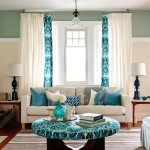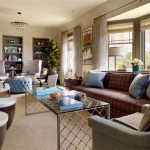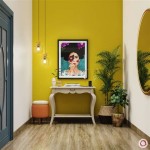Pediatric Exam Room Decorations: Creating a Soothing and Supportive Environment
The design and decoration of a pediatric exam room play a significant role in a child's experience during medical visits. A well-designed space can alleviate anxiety, foster cooperation, and contribute to a more positive interaction between the patient, their family, and the healthcare provider. Conversely, a sterile or overwhelming environment can exacerbate fear and make the examination process more challenging. Therefore, careful consideration of decorative elements is crucial in creating a welcoming and therapeutic atmosphere.
The principles of effective pediatric exam room design extend beyond mere aesthetics. The selection of colors, artwork, and furnishings should be guided by an understanding of child development, sensory perception, and the specific needs of young patients. Furthermore, the overall design should reflect a commitment to creating a space where children feel safe, comfortable, and empowered. This requires a thoughtful approach to the arrangement of furniture, the selection of appropriate distractions, and the incorporation of elements that promote a sense of calm.
Color Psychology and its Impact on Children
Color is a powerful tool in influencing mood and behavior, and this is particularly true for children. Selecting the right color palette can contribute significantly to creating a comforting environment. Research suggests that certain colors evoke specific emotional responses. For example, soft, muted blues and greens are often associated with calmness and tranquility, making them suitable choices for walls and larger design elements. These colors can create a serene atmosphere that helps to reduce anxiety and promote relaxation.
Conversely, overly vibrant and stimulating colors, while potentially appealing, might be overwhelming for some children, particularly those who are already feeling apprehensive. It is essential to strike a balance and avoid using a single, dominant color. Incorporating a blend of complementary colors can create visual interest while maintaining a sense of harmony. Consider using accent walls or decorative elements to introduce pops of brighter colors strategically, avoiding excessive use of intense hues.
Artwork and Imagery: Creating a Stimulating and Engaging Environment
The artwork chosen for a pediatric exam room should be carefully considered to resonate with children of various ages and backgrounds. Illustrations featuring friendly animals, familiar cartoon characters, or engaging landscapes can provide a distraction and help to redirect a child's focus away from the medical procedures. These images can serve as conversation starters, fostering communication and building rapport between the healthcare provider and the child.
It is important to select artwork that is age-appropriate and culturally sensitive. Avoid imagery that could be frightening or anxiety-provoking, such as depictions of illness or injury. Consider incorporating interactive elements, such as posters with puzzles or seek-and-find games, to further engage the child and provide a sense of control. The use of photographs of diverse families or images reflecting local culture can also contribute to a feeling of inclusivity and familiarity.
Furniture and Space Planning: Maximizing Comfort and Functionality
The selection and arrangement of furniture are critical aspects of pediatric exam room design. Furniture should be appropriately scaled for children and parents, providing comfortable seating options for both. Consider incorporating child-sized chairs, colorful ottomans, or beanbag chairs to create a more welcoming and less clinical feel. The waiting area, if present, should offer a variety of seating options to accommodate different family sizes and preferences.
The layout of the room should prioritize functionality while maximizing space. Ensure that there is ample space for movement, particularly for young children who may be prone to exploring. The exam table should be easily accessible and positioned to facilitate effective communication between the healthcare provider and the child. Consider incorporating built-in storage solutions to minimize clutter and maintain a clean and organized appearance. The placement of hand sanitizer dispensers and other hygiene-related items should be convenient but unobtrusive.
Incorporating Interactive Elements and Distractions
Distractions and interactive elements can be invaluable tools for managing a child's anxiety during medical visits. The incorporation of age-appropriate toys, books, and games can help to alleviate boredom and provide a sense of control. Consider providing a designated play area or a basket of toys that can be easily sanitized. Wall-mounted interactive panels or digital screens displaying educational games or calming visualizations can provide additional engagement.
It is crucial to choose toys and games that are safe, durable, and easy to clean. Avoid toys with small parts that could pose a choking hazard. Ensure that all materials are regularly sanitized to maintain a hygienic environment. Providing age-appropriate reading materials or coloring books can also help to keep children occupied and reduce their anxiety levels.
Lighting and Sensory Considerations
Lighting plays a critical role in creating a comfortable and inviting environment. Utilizing a combination of natural and artificial light is often the most effective approach. Allow for ample natural light whenever possible, as exposure to sunlight can have a positive impact on mood and well-being. However, ensure that window coverings are available to control the amount of light entering the room and to maintain patient privacy.
The use of ambient lighting with dimmable options can create a calming atmosphere. Avoid harsh overhead lighting, which can be overwhelming and contribute to anxiety. Consider incorporating task lighting for specific procedures, such as examining a child's ears or throat. The overall lighting scheme should allow for clear visibility while creating a soothing and comfortable ambiance. The use of textured materials and elements that appeal to the senses, such as soft fabrics or tactile artwork can also enhance the environment.
Durability, Cleanliness, and Safety
The design and decoration of a pediatric exam room must prioritize durability, cleanliness, and safety. Materials should be selected for their ability to withstand heavy use and frequent cleaning. Surfaces should be easily washable and resistant to stains. Flooring should be non-slip and easy to maintain. Avoid using materials that may harbor allergens or pose a risk of infection. All furniture and decorative elements should be free of sharp edges or potential hazards.
Regular cleaning and disinfection are essential for maintaining a safe and hygienic environment. Implement a robust cleaning protocol to ensure that all surfaces are regularly sanitized. The use of antimicrobial coatings on high-touch surfaces can further reduce the risk of infection. Ensure that all electrical outlets are covered and that cords are safely managed. Regularly inspect the exam room for any potential safety hazards and address them promptly.

Pediatric Practice The Library Exam Room Office Decor Doctors Dental Design Interiors

Pin On Jmsaundersart My Work

Pediatric Exam Room Associates Of Ct Waterbury

Pediatrics Room Signage Idea Door Signs Colorful Exam Nurse Office Decor Pediatric

Pediatric Practice The Park Exam Room View 1 Office Decor Clinic Interior Design High Walls

Pediatric Practice Time To Exercise Exam Room Office Decor Medical Design

Pediatric Exam Room Associates Of Ct Waterbury

Top 5 Functional Medical Clinic Decor Ideas For Kids Ids Blog

Hospital And Medical Clinic Decor Ids Kids

Animals Helping Patients Feel At Ease During Doctor Visits My Wonderful Walls
Related Posts







